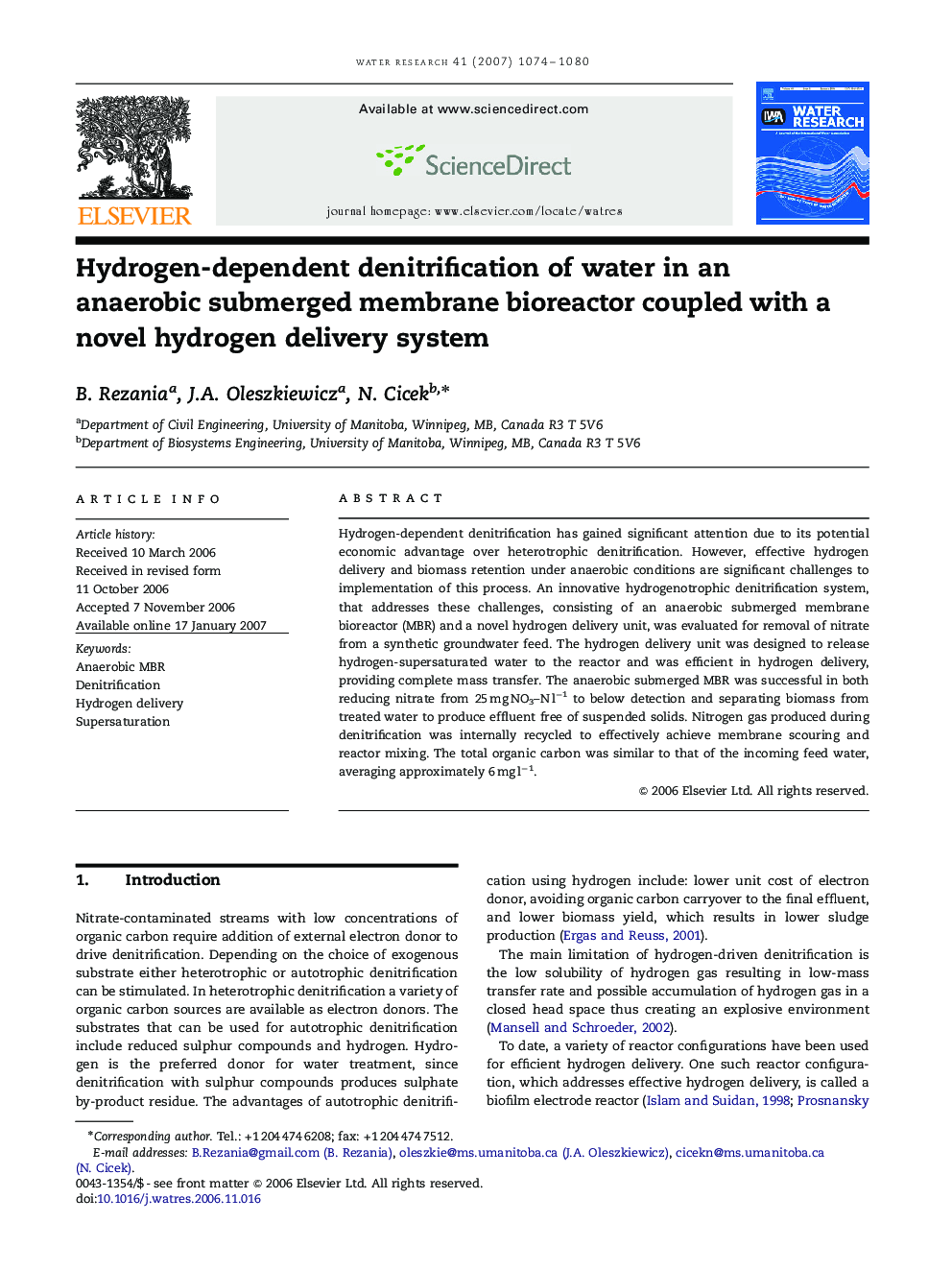| Article ID | Journal | Published Year | Pages | File Type |
|---|---|---|---|---|
| 4486627 | Water Research | 2007 | 7 Pages |
Hydrogen-dependent denitrification has gained significant attention due to its potential economic advantage over heterotrophic denitrification. However, effective hydrogen delivery and biomass retention under anaerobic conditions are significant challenges to implementation of this process. An innovative hydrogenotrophic denitrification system, that addresses these challenges, consisting of an anaerobic submerged membrane bioreactor (MBR) and a novel hydrogen delivery unit, was evaluated for removal of nitrate from a synthetic groundwater feed. The hydrogen delivery unit was designed to release hydrogen-supersaturated water to the reactor and was efficient in hydrogen delivery, providing complete mass transfer. The anaerobic submerged MBR was successful in both reducing nitrate from 25 mg NO3–N l−1 to below detection and separating biomass from treated water to produce effluent free of suspended solids. Nitrogen gas produced during denitrification was internally recycled to effectively achieve membrane scouring and reactor mixing. The total organic carbon was similar to that of the incoming feed water, averaging approximately 6 mg l−1.
